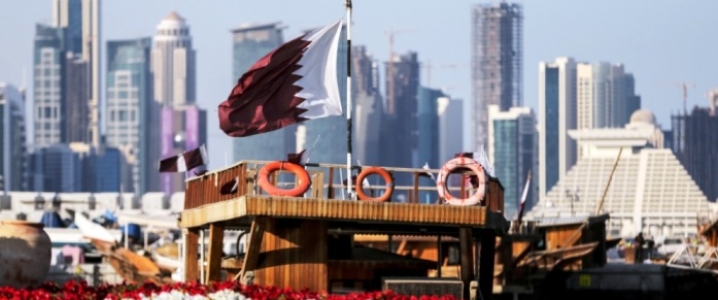The UK, which imports some 13 percent of the gas it consumes in the form of liquefied natural gas (LNG) cargoes, has been relying heavily on Qatari LNG imports to meet demand in recent years.
So far into 2018, however, the UK imported more LNG cargoes from elsewhere than from Qatar—reflecting increased global supply from new start-ups, as well as lower Qatari production over the past few months as some trains have been undergoing maintenance in the tiny country that is the world’s top LNG exporter.
According to an S&P Global Platts analysis, so far this year, the UK has received just four LNG tankers from Qatar, compared to nine cargoes originating from other countries.
This is in stark contrast to the past few years in which the UK’s imports of LNG were dominated by Qatari LNG supply. Last year, for example, the UK got 87 percent of its LNG from Qatar. In the three years prior, the UK received 93-94 percent of its LNG supply from the Middle Eastern country, according to S&P Global Platts Analytics data.
This year, the UK has received four Qatari LNG cargoes, and nine from other countries—two each from the U.S., Norway, Russia, and Trinidad & Tobago, and one cargo from Egypt.
To compare, for the whole of 2017, the UK received a total of 12 cargoes from countries other than Qatar. Related: Why Oil Prices Just Rallied To $70
The more diverse LNG supplies resulted in higher regasification levels at UK terminals that have been historically less active than the South Hook terminal, whose majority shareholder is Qatar Petroleum, with ExxonMobil and France’s Total minority shareholders.
UK’s National Grid data shows that South Hook regasification levels have been 54 percent lower so far this year compared to January 1-April 10 last year, and 80 percent lower than the same period in 2016.
On the other hand, higher LNG supply from new projects around the world—including Cove Point in the U.S. and Yamal in Russia—have led to a surge in regasification levels at the Dragon and Isle of Grain terminals, whose combined regasification volumes are already higher than those for the entire 2017.
Qatari LNG exports have been dropping each month since January, due to some maintenance at facilities, according to Platts Analytics data. Qatar’s production and exports are expected to recover in May and June that could lead to more Qatari LNG cargoes sent to the UK.
As more diverse LNG supply is now available on the market, the UK replaced some of the Qatari cargoes with tankers from other sources, including from Russia. At the peak of the spy poisoning scandal that strained UK-Russian relations amid a severe cold snap in Britain, local lawmakers and Prime Minister Theresa May said that they were “looking to other countries” for gas supplies. UK gas traders shrugged off concerns that the UK would feel shortage of supplies of natural gas which plays a key role in its energy mix—80 percent of the UK’s 25 million homes are powered by gas, and around a quarter of the country’s electricity is generated by gas-fired power stations.
Last month, the UK was the final destination of the first LNG cargo from the new Cove Point LNG terminal on the U.S. East Coast. The cargo was diverted from its original route toward the Pacific basin and docked at the Dragon terminal in the UK just after LNG stockpiles dwindled after two cold snaps in February and March.
This was only the second U.S. LNG cargo into Britain since U.S. exports began in February 2016, as northwest Europe is not the main destination of U.S. LNG. Most destination-free U.S. cargoes go to the gas-thirsty northeast Asian markets where they attract higher prices, or closer to the U.S., especially in Mexico.
The UK doesn’t expect high LNG imports in the coming months.
Related: Continuously Rising Energy Costs Will Cripple The Economy
UK’s National Grid said in its Summer Outlook Report 2018 this week that LNG imports would remain low in the summer, while gas from the UK and Norwegian Continental Shelf will be the dominant component of gas supplies.
“LNG has been flowing instead to Asian markets, where it attracts a higher price. Historically, we generally see a peak in LNG delivery to GB in the early summer as winter heating demand in the Asian markets declines, but before Asian electricity load for air conditioning reaches its peak. We are expecting a similar flow characteristic this summer,” National Grid said in the report.
“Forward prices suggest that Asian markets this summer will attract a higher price than GB so we are not expecting very high LNG deliveries,” National Grid noted.
By Tsvetana Paraskova for Oilprice.com
More Top Reads From Oilprice.com:
- Permian Bottleneck Could Impact Global Oil Markets
- Higher Oil Prices Boost Saudi Credit Rating
- Saudi Officials Worried About Oil’s Future



















First, the UK market is not one of Qatar’s big LNG export markets. The overwhelming bulk of Qatar’s LNG exports go to the Asia-Pacific region where there is a fast-growing demand for LNG and where prices are higher. Moreover, most of Qatar’s major customers are in the Asia-Pacific region. They get priority of supplies.
With global demand for liquefied natural gas (LNG) growing by leaps and bounds, Qatar is planning to expand its production and export capacity of LNG with the aim of maintaining its position as the world’s largest producer and exporter of LNG. Foreign finance for this expansion is easily accessible.
Qatar currently accounts for 32% of global LNG demand and 80% of all LNG exports to the Asia-Pacific region.
Still, Qatar will face challenges from Australia, the United States and Russia in the Asia-Pacific region. But with lowest production costs in the world, Qatar will be able to withstand any challenges.
Dr Mamdouh G Salameh
International Oil Economist
Visiting Professor of Energy Economics at ESCP Europe Business School, London